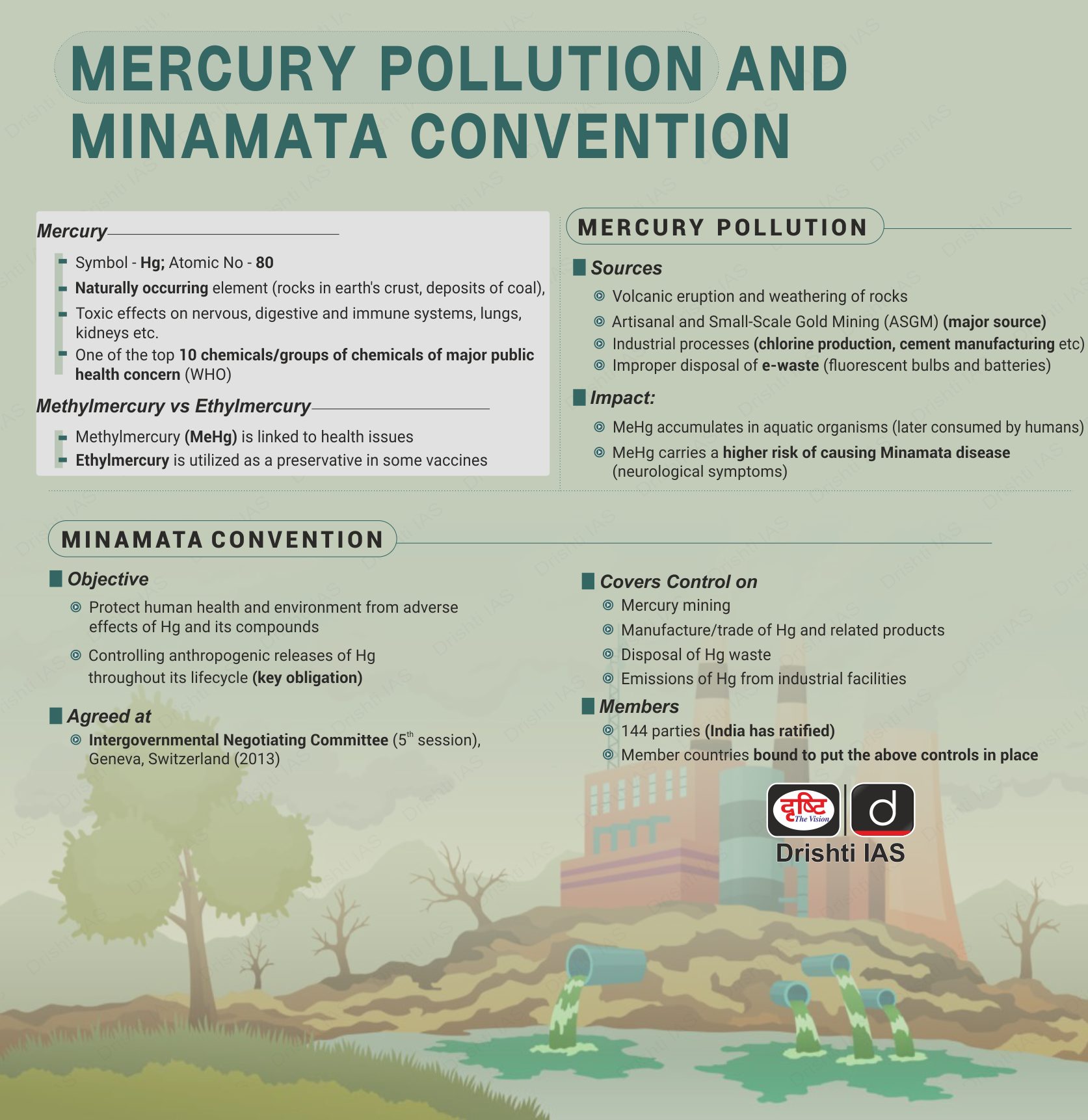Initiative to Eliminate Mercury-Containing Medical Devices | 23 May 2024
Why in News?
The governments of Albania, Burkina Faso, India, Montenegro, and Uganda have united to combat chemical pollution by launching a USD 134-million project to eliminate the use of mercury in medical devices.
What are the Key Highlights of the Initiative to Eliminate Mercury?
- The initiative is led by United Nations Environment Programme (UNEP), funded by Global Environment Facility (GEF), and executed by World Health Organisation (WHO), aiming to reduce the impact of healthcare on the environment and human health.
- It aims to support global efforts in improving the management of mercury waste and promote the use of alternatives.
- The project aims to phase out mercury-added thermometers and sphygmomanometers at a rate of 20% per year, improving the lives of over 1.8 million people.
- Medical thermometers and sphygmomanometers (devices that measure blood pressure) contain mercury and are harmless as long as they remain intact.
- Instances of breakages and improper disposal of medical devices release mercury vapour that contaminates surroundings both air and water.
- Inhalation of these mercury vapours can cause damage to the lungs, kidneys and nervous system.
What is Mercury?
- About: Mercury is a naturally occurring element found in the Earth's crust. It is considered by the WHO as one of the top ten chemicals or groups of chemicals of major public health concern.
- Applications:
- Mercury's high coefficient of thermal expansion and easy visibility make it suitable for use in traditional thermometers and barometers.
- It has been used in various chemical and mining processes, including the production of chlorine and mining of gold.
- Mercury-wetted switches are used in various electrical applications because of it's conductivity and low resistance.
What is the Minamata Convention on Mercury Pollution?
UPSC Civil Services Examination, Previous Year Questions (PYQs)
Prelims
Q. Indiscriminate disposal of used fluorescent electric lamps causes mercury pollution in the environment. Why is mercury used in the manufacture of these lamps? (2010)
(a) A mercury coating on the inside of the lamp makes the light bright white.
(b) When the lamp is switched on, the mercury in the lamp causes the emission of ultra-violet radiations.
(c) When the lamp is switched on, it is the mercury which converts the ultra-violet energy into visible light.
(d) None of the statement given above is correct about the use of mercury in the manufacture of fluorescent lamps
Ans: (b)

